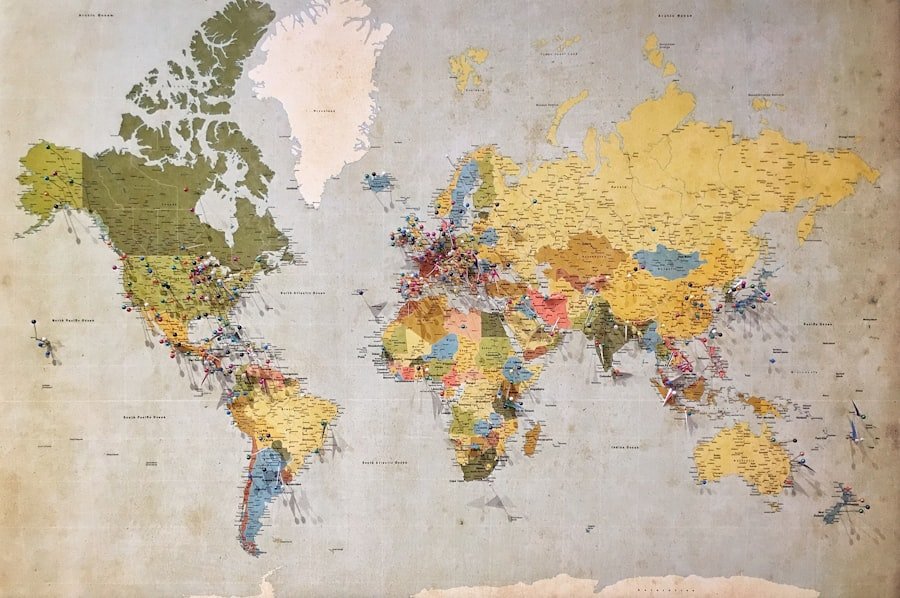Trade liberalization is the process of reducing or eliminating barriers to international trade, such as tariffs, quotas, and other restrictions on the exchange of goods and services between countries. This economic policy aims to promote global economic growth, enhance efficiency, and foster international cooperation. Trade liberalization is typically implemented through various mechanisms, including multilateral agreements under the World Trade Organization (WTO), regional trade agreements, and bilateral trade deals between nations.
In recent decades, trade liberalization has become a prominent feature of the global economy, with many countries adopting free trade principles and open market policies. Advocates of trade liberalization argue that it can lead to increased competition, lower consumer prices, and more efficient resource allocation. However, critics contend that trade liberalization may have adverse effects, particularly on developing nations.
This article will examine the advantages, challenges, and impacts of trade liberalization on developing countries, with a specific focus on its effects on agriculture, industrialization, economic growth, and overall development.
Key Takeaways
- Trade liberalization refers to the removal of barriers to trade, such as tariffs and quotas, in order to promote free trade and economic growth.
- Developing countries can benefit from trade liberalization through increased access to international markets, foreign investment, and technology transfer.
- However, challenges and risks of trade liberalization for developing countries include increased competition, vulnerability to global market fluctuations, and potential job losses in certain industries.
- Trade liberalization can have both positive and negative impacts on agriculture and farmers in developing countries, leading to increased export opportunities but also potential displacement of small-scale farmers.
- Industrialization and manufacturing in developing countries can be both positively and negatively affected by trade liberalization, with potential for increased exports and economic growth but also competition from more advanced economies.
- Overall, trade liberalization can contribute to economic growth and development in developing countries, but it is important for governments to implement policies and strategies to manage its impact effectively.
Benefits of Trade Liberalization for Developing Countries
Trade liberalization can bring several benefits to developing countries. Firstly, it can lead to increased access to foreign markets, allowing developing countries to export their goods and services to a wider customer base. This can help to boost economic growth and create employment opportunities.
Additionally, trade liberalization can lead to increased foreign direct investment (FDI) in developing countries, as foreign companies seek to take advantage of new market opportunities. This can bring in new technologies, expertise, and capital, which can help to drive economic development. Furthermore, trade liberalization can lead to the transfer of knowledge and skills from more advanced economies to developing countries.
This can help to improve productivity and efficiency in domestic industries, leading to higher output and improved competitiveness. Finally, trade liberalization can lead to lower prices for consumers, as imported goods become more affordable due to reduced tariffs and other trade barriers. This can help to improve living standards and reduce poverty in developing countries.
Overall, trade liberalization has the potential to bring significant benefits to developing countries by increasing market access, attracting foreign investment, transferring knowledge and skills, and lowering prices for consumers.
Challenges and Risks of Trade Liberalization for Developing Countries

While trade liberalization can bring several benefits to developing countries, it also poses several challenges and risks. One of the main challenges is the potential for increased competition from foreign producers. When trade barriers are removed, domestic industries may struggle to compete with more efficient and established foreign companies.
This can lead to job losses and economic dislocation in certain sectors, particularly in industries that are not competitive on the global stage. Additionally, trade liberalization can lead to increased volatility in commodity prices, which can have a significant impact on developing countries that rely heavily on exports of primary commodities such as agricultural products or raw materials. Fluctuations in global prices can lead to income instability for farmers and producers in developing countries, making it difficult for them to plan for the future or invest in their businesses.
Furthermore, trade liberalization can also lead to a loss of policy autonomy for developing countries. When countries open up their markets to foreign competition, they may be required to adhere to international standards and regulations that are set by more powerful trading partners. This can limit the ability of developing countries to pursue their own development strategies and protect domestic industries.
In summary, trade liberalization poses several challenges and risks for developing countries, including increased competition from foreign producers, volatility in commodity prices, and a loss of policy autonomy.
Impact of Trade Liberalization on Agriculture and Farmers in Developing Countries
The impact of trade liberalization on agriculture and farmers in developing countries is a topic of significant concern. On one hand, trade liberalization can lead to increased market access for agricultural products from developing countries, allowing farmers to export their goods to new markets. This can lead to increased income for farmers and rural communities, as well as improved access to new technologies and practices from more advanced agricultural economies.
On the other hand, trade liberalization can also lead to increased competition from heavily subsidized agricultural products from developed countries. This can make it difficult for farmers in developing countries to compete on the global stage, leading to job losses and economic dislocation in rural areas. Additionally, fluctuations in global commodity prices can lead to income instability for farmers in developing countries, making it difficult for them to plan for the future or invest in their businesses.
Overall, the impact of trade liberalization on agriculture and farmers in developing countries is complex and multifaceted. While it can bring increased market access and new technologies, it also poses significant challenges in terms of competition and income instability.
Impact of Trade Liberalization on Industrialization and Manufacturing in Developing Countries
The impact of trade liberalization on industrialization and manufacturing in developing countries is another area of concern. On one hand, trade liberalization can lead to increased access to foreign markets for manufactured goods from developing countries. This can help to boost economic growth and create employment opportunities in the manufacturing sector.
Additionally, trade liberalization can lead to increased foreign direct investment (FDI) in manufacturing industries in developing countries, bringing in new technologies and expertise. On the other hand, trade liberalization can also lead to increased competition from more efficient and established foreign companies. This can make it difficult for domestic industries in developing countries to compete on the global stage, leading to job losses and economic dislocation in certain sectors.
Additionally, trade liberalization can lead to a loss of policy autonomy for developing countries in terms of industrial policy, as they may be required to adhere to international standards and regulations set by more powerful trading partners. In summary, the impact of trade liberalization on industrialization and manufacturing in developing countries is complex and multifaceted. While it can bring increased market access and new technologies, it also poses significant challenges in terms of competition and policy autonomy.
Impact of Trade Liberalization on Economic Growth and Development in Developing Countries

The impact of trade liberalization on economic growth and development in developing countries is a topic of significant debate. Proponents argue that trade liberalization can lead to increased efficiency, productivity, and competitiveness in domestic industries, leading to higher output and improved living standards. Additionally, increased market access and foreign direct investment (FDI) can help to drive economic growth and create employment opportunities.
Critics argue that trade liberalization can also have negative impacts on economic growth and development in developing countries. Increased competition from foreign producers can lead to job losses and economic dislocation in certain sectors. Additionally, volatility in commodity prices can lead to income instability for farmers and producers in developing countries, making it difficult for them to plan for the future or invest in their businesses.
Overall, the impact of trade liberalization on economic growth and development in developing countries is complex and multifaceted. While it has the potential to bring significant benefits in terms of efficiency and productivity, it also poses several challenges in terms of competition and income instability.
Conclusion and Recommendations for Managing the Impact of Trade Liberalization on Developing Countries
In conclusion, trade liberalization has the potential to bring significant benefits to developing countries by increasing market access, attracting foreign investment, transferring knowledge and skills, and lowering prices for consumers. However, it also poses several challenges and risks, including increased competition from foreign producers, volatility in commodity prices, and a loss of policy autonomy. To manage the impact of trade liberalization on developing countries, several recommendations can be considered.
Firstly, developing countries should invest in education and training programs to improve the skills and productivity of their workforce. This can help domestic industries to compete more effectively on the global stage. Additionally, developing countries should consider implementing targeted policies and programs to support vulnerable sectors such as agriculture and manufacturing.
Furthermore, international cooperation is essential for managing the impact of trade liberalization on developing countries. Developed countries should consider providing technical assistance and capacity-building support to help developing countries adjust to the challenges of trade liberalization. Additionally, international organizations such as the World Trade Organization (WTO) should consider implementing measures to ensure that trade liberalization is fair and equitable for all parties involved.
Overall, while trade liberalization has the potential to bring significant benefits to developing countries, it is important to carefully manage its impact through targeted policies, international cooperation, and support for vulnerable sectors. By doing so, developing countries can maximize the benefits of trade liberalization while minimizing its potential negative impacts.
For more information on the impact of trade liberalization on developing countries, you can check out the article “The Pros and Cons of Trade Liberalization for Developing Countries” on The Econosphere. This article provides a comprehensive analysis of the potential benefits and drawbacks of trade liberalization for developing nations, offering valuable insights into the complex dynamics of international trade and its effects on economic development.
FAQs
What is trade liberalization?
Trade liberalization refers to the removal or reduction of barriers to trade between countries, such as tariffs, quotas, and other restrictions. This is done to promote free trade and increase the flow of goods and services between nations.
How does trade liberalization impact developing countries?
Trade liberalization can have both positive and negative impacts on developing countries. It can lead to increased access to foreign markets, which can stimulate economic growth and create new opportunities for businesses. However, it can also expose domestic industries to greater competition, which may lead to job losses and economic instability.
What are the potential benefits of trade liberalization for developing countries?
Some potential benefits of trade liberalization for developing countries include increased foreign investment, access to new technologies and knowledge, and the potential for economic growth and development. It can also lead to lower prices for consumers and a wider variety of goods and services.
What are the potential drawbacks of trade liberalization for developing countries?
Potential drawbacks of trade liberalization for developing countries include the risk of increased inequality, as well as the potential for domestic industries to be outcompeted by foreign companies. It can also lead to environmental degradation and the exploitation of natural resources.
How can developing countries mitigate the negative impacts of trade liberalization?
Developing countries can mitigate the negative impacts of trade liberalization by investing in education and infrastructure, implementing policies to support domestic industries, and negotiating trade agreements that take into account the specific needs and challenges of their economies. They can also focus on diversifying their economies and promoting sustainable development.








